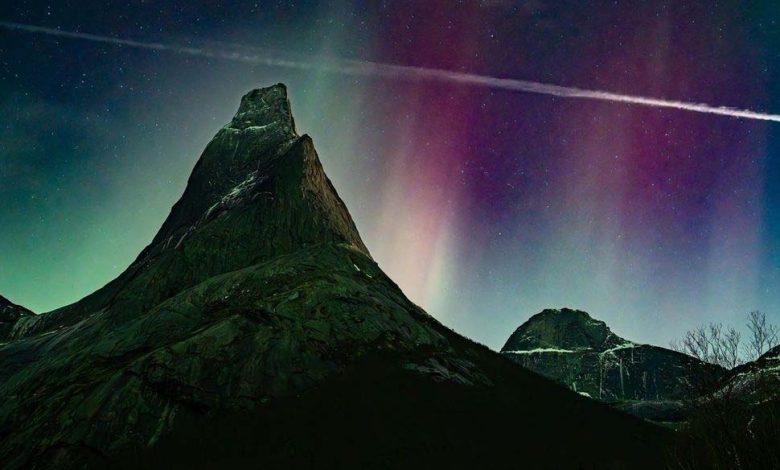Artificial clouds released under glowing aurora in Norway

SCIENCE: It’s not every day you see a rocket launch into a sky lit up with colorful aurora — and it’s even rarer to see a rocket leave a swirling cloud behind it as part of a NASA science experiment. But that’s exactly what Ivar Sandland of Bodø, Norway, saw during a small geomagnetic storm on Nov. 10. Sandland operates Nordland Adventures, a tour and adventure company in northern Norway.
“I went on a road trip from Bodø to Tromsø to visit my daughter, camera always at the ready,” Sandland told Space.com. “On the way back (halfway), I stopped by Mount Stetind — Norway’s national mountain. I always wanted to see the northern lights above the summit. It happened.” “When I saw the rocket launch, I was very surprised,” Sandland said. “I assumed it was a very strange cloud. Then checked where it came from and found out it might be from the Andoya Space Center. The next day I read in the local news that there was a rocket launch.”
As it turned out, that rocket launch was actually a double-header, and both rockets launched were part of NASA’s Vorticity Experiment (VORTEX). The project seeks to better understand how energy flows through the turbopause, a part of Earth’s atmosphere where the mesosphere and thermosphere meet about 56 miles (90 kilometers) up.
To study these interactions, the researchers launched a sounding rocket (a small, sub-orbital vehicle used in scientific research) loaded with trimethyl aluminum, a compound used in electronics and semiconductor manufacturing.
After being released into the air, the clumps of trimethyl aluminum created swirls and vortices in the sky that could help explain how gravitational waves behave and interact at this level of the atmosphere.





